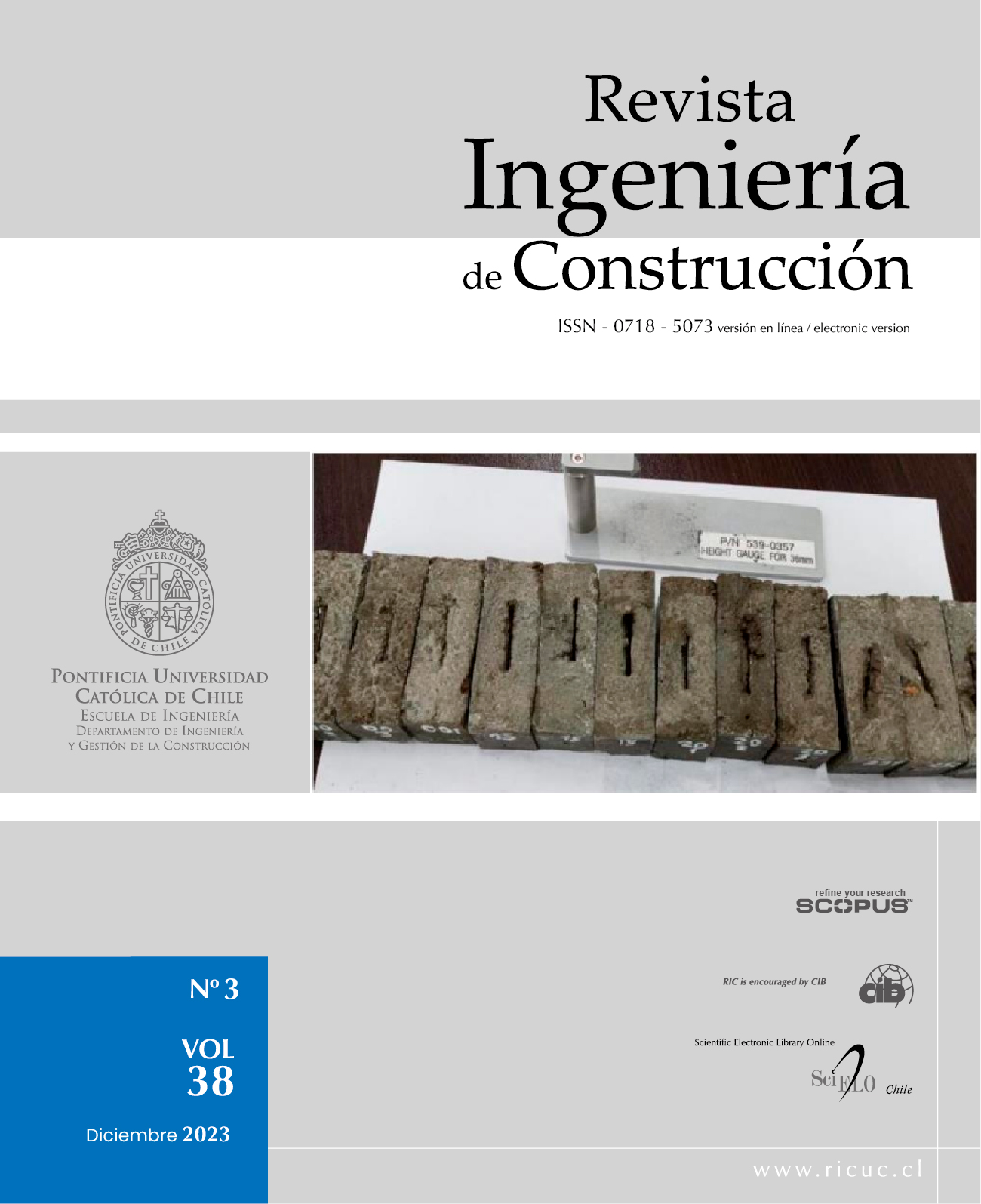Granulometric analysis of aggregate for concrete through an algorithm based on neural networks (Deep Learning)
DOI:
https://doi.org/10.7764/RIC.00079.21Keywords:
Aggregate, algorithm, granulometry, neural networkAbstract
Currently, the traditional mix design fails to adequately optimize the times involved. Therefore, it is proposed to use the neural network method to improve efficiency in terms of time and access to difficult places, as well as transport to the laboratory. The main objective is to apply deep learning techniques to evaluate the quality of a quarry aggregate and determine if it meets the specifications required for its specific use, in accordance with current regulations. The methodology consisted of collecting 20 images per sample, obtaining the granulometry analysis, 2 quarries from the department of Junín Satipo (Sonomoro and Llaylla) and 1 quarry from the department of Cusco (Vicho) were considered, with a total of 13 samples, in The present article carried out is located within a type of experimental research with a quantitative approach. The results were obtained through the execution of the Yolo algorithm, with image detection, obtaining 93.20%, according to the Peruvian technical standard (NTP 400.12, 2001), with a standard deviation of 0.96%. The algorithm was trained according to the sieves given in the Peruvian technical standard (NTP 350.001, 1970). In conclusion, the use of the algorithm in the data analysis has allowed to significantly reduce the time required to carry out the physical evaluation and has effectively improved the study of the aggregate.


